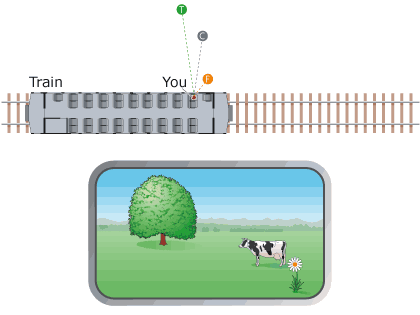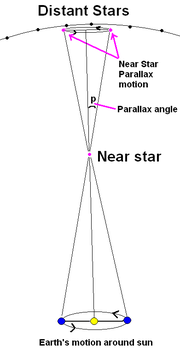

Simulated surface is presented to a stationary observer on an unmoving monitor, the perceived corrugations are unstable with

When the same pattern of relative motions among parts of the With respect to a stationary observer (Rogers & Graham, 1979). (3-D) surfaces, both when an observer makes lateral movementswith respect to a stationary surface and when the surface translates Motion parallax has been shown to be an effective and unamhiguous:source of information about the structure of three-dimensional Primary data shows a strong preference for the tracked system condition and the statistical scale factor was very significant.
Motion parallax driver#
For this purpose, a driving simulator experiment, carried out in the CAVE Immersive Integration Platform (P2I) Driving Simulator, we analyzed: driver head movements during different realistic situations, preferences scale in each specific situation, and thus with and without head tracked conditions. The main goal of this presented experiment was to study whether head movement impacts AR depth perception and thus modifying displayed image quality and decreasing driver performance. At Renault, research is carried out in a number of automotive AR domains: the used information type and visual grammar, visual perception for the displayed information (depth, localization), and real time mixed reality, that is matching virtual and real environment. Research in perceptual and human factors assessment is needed for relevant and correct display of this information for maximal road traffic safety as well as optimal driver comfort. However, the way road traffic, signs or vehicle information is displayed impacts strongly driver's attention with increased mental workload and safety concerns. Relevant road traffic as well as useful navigation or path planning information may be displayed using partially or totally the windshield surface thanks to these emerging technologies. One of the new application domains is the automobile industry, linked to the necessary men machine aspects of Advanced Driving Assistance Systems (ADAS). Research and technological advance in the field of Augmented Reality (AR) is growing rapidly (Mas, 2011).

The results are also applicable when choosing scenarios for this test method. This research presents results that are relevant to consider when developing vehicle-in-the-loop platforms. The research shows that this solution changes speed perception and results in a significant degradation in performance of tasks dependent on visual acuity. The second system uses an opaque head-mounted display in an entirely virtual world. The results show that lateral driving behavior changes with added latency, but longitudinal behavior appears unaffected. The first involves video-see through head-mounted displays, where the focus of the research is on the effects of visual latency on driving behavior. Two techniques for vehicle-in-the-loop systems are studied. There is a need to know how the technology behind the method might influence the results from vehicle-in-the-loop testing. In contrast, the real vehicle provides the correct vehicle dynamics and motion feedback. Driving simulators offer repeatability, safety, and the possibility of complex interactions between actors. This method combines the benefits of driving simulators with the benefits of using a real vehicle on a test track. This thesis examines vehicle-in-the-loop testing, an innovative method where the driver of a real vehicle wears a head-mounted display that displays virtual targets. Other methods increase the fidelity by including human drivers, such as driving simulators and experiments performed at test tracks. Software-in-the-loop and hardware-in-the-loop testing offer effective driverless testing. There are multiple methods available to perform such testing.
Motion parallax verification#
These systems need to be tested for verification and validation to ensure that the system intervenes in the correct situations using the correct measures. In the last decades, there has been a substantial increase in the development of complex active safety systems for automotive vehicles.


 0 kommentar(er)
0 kommentar(er)
